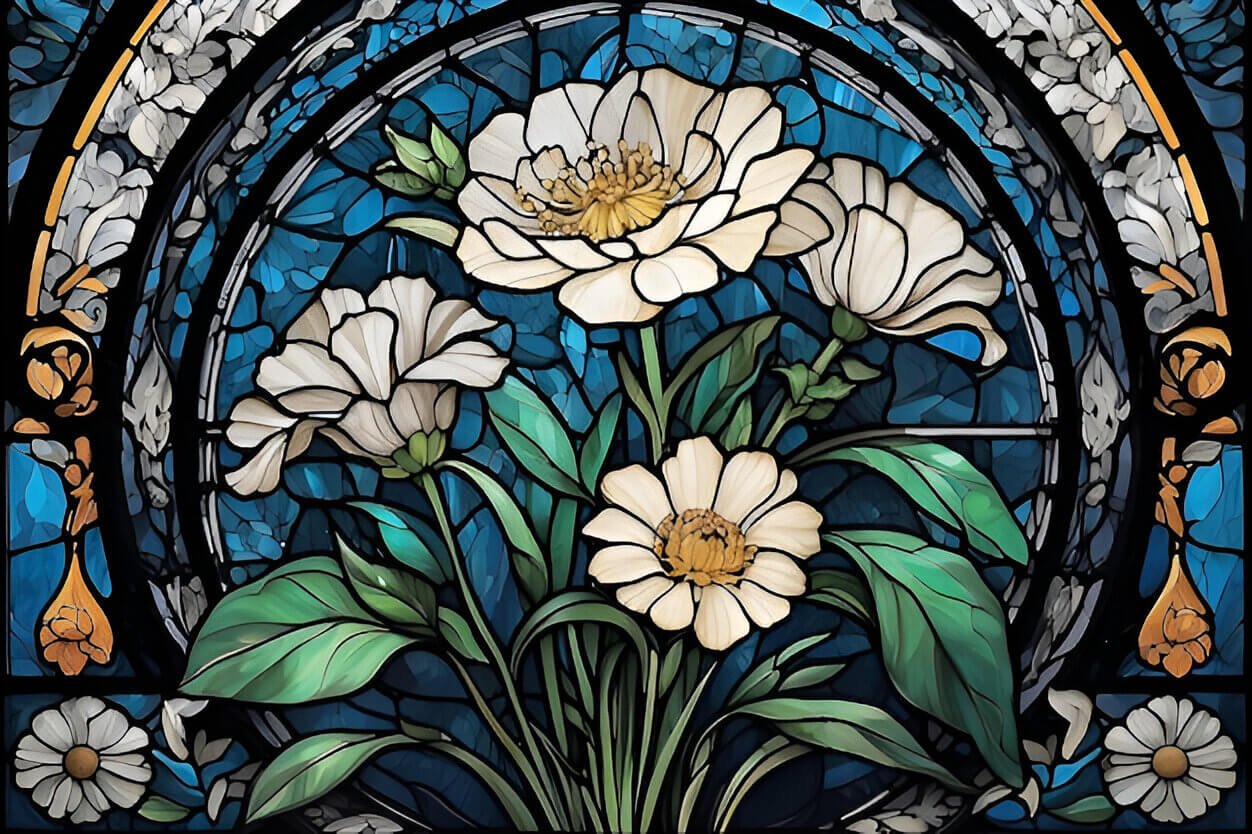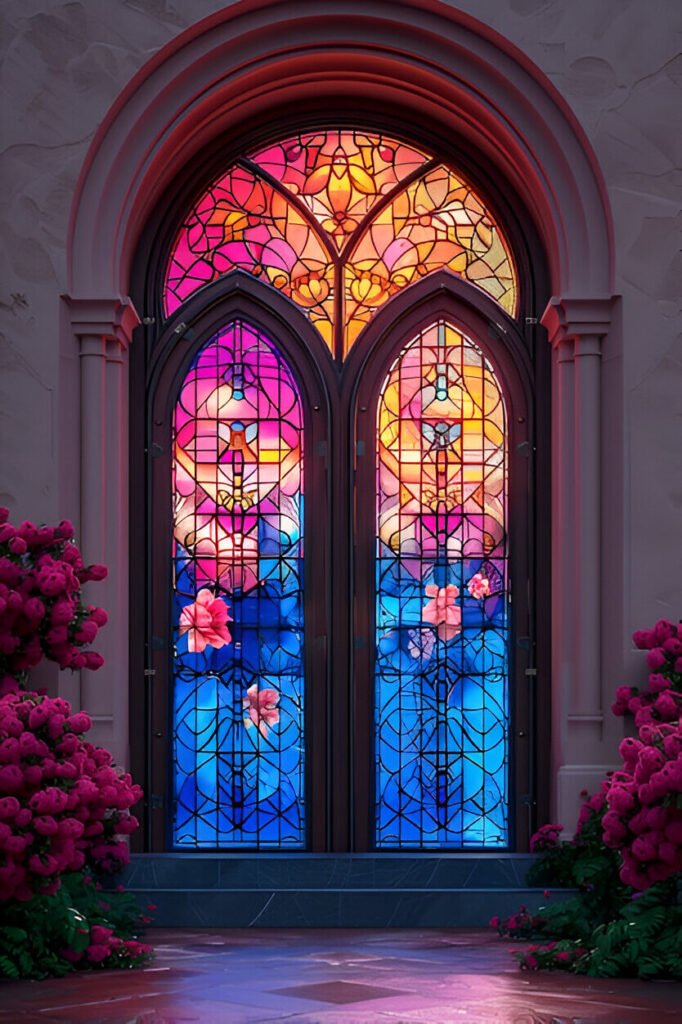Now Reading: Flowers Stained Glass – Art & Sustainability in Design
-
01
Flowers Stained Glass – Art & Sustainability in Design
Flowers Stained Glass – Art & Sustainability in Design

Introduction: Why Flowers Stained Glass Matters in Urban Spaces
Modern urban design is constantly evolving, integrating aesthetics with sustainability to create eco-friendly and visually captivating spaces. One such artistic yet environmentally conscious element is flowers stained glass. This timeless craft not only enhances architectural beauty but also promotes energy efficiency, cultural heritage, and biophilic design principles.
In this article, we’ll explore how flowers stained glass contributes to sustainable urban development, its historical significance, and how cities worldwide are incorporating this art form into modern infrastructure. For more sustainable design ideas, check out our Eco-Friendly Home Renovations Guide.
The Role of Flowers Stained Glass in Sustainable Architecture
How Does Stained Glass Support Sustainability?
Stained glass is not just a decorative element; it plays a crucial role in green building design. Here’s how:
- Natural Lighting: Stained glass allows filtered sunlight to enter buildings, reducing reliance on artificial lighting and lowering energy consumption.
- Thermal Efficiency: High-quality stained glass panels provide insulation, helping to regulate indoor temperatures and minimize the need for heating or cooling.
- Use of Recycled Materials: Many stained glass artists and manufacturers now use reclaimed glass, reducing waste and supporting circular economies.
- Longevity and Durability: Unlike conventional painted walls or plastic decor, stained glass installations can last centuries with minimal maintenance.
The Aesthetic and Cultural Impact of Flowers Stained Glass

Why Are Flowers a Popular Motif in Stained Glass?
Floral designs in stained glass have been cherished for centuries due to their universal appeal and symbolic meanings. Flowers stained glass can represent growth, renewal, and harmony with nature—ideal themes for urban spaces striving for sustainability.
Some commonly used floral patterns in urban stained glass designs include:
- Roses: Symbolizing beauty and elegance.
- Lotus: Representing purity and enlightenment.
- Sunflowers: Associated with positivity and energy.
- Cherry Blossoms: Reflecting cultural significance, especially in East Asia.
Examples of Flowers Stained Glass in Modern Cities
Many urban centers worldwide have incorporated flowers stained glass into their design to promote sustainability and cultural identity. Here are a few notable examples:
- The Palau de la Música Catalana (Barcelona, Spain): This UNESCO-listed concert hall features stunning floral stained glass windows that enhance its artistic and acoustic quality.
- Chicago Cultural Center (USA): Its famous Tiffany stained glass dome includes floral motifs that reflect the city’s commitment to blending heritage with innovation.
- Tokyo’s Subway Stations: Several stations feature intricate stained glass designs, including floral patterns, creating a calming atmosphere in busy transit hubs.
Integrating Flowers Stained Glass into Urban Infrastructure

Where Can We Incorporate Flowers Stained Glass?
Urban planners, architects, and environmental designers can integrate flowers stained glass into various public and private spaces, such as:
- Public Buildings: Museums, libraries, and city halls can use stained glass to enhance architectural elegance and reduce energy use.
- Parks & Greenhouses: Botanical gardens and eco-parks can use stained glass to create immersive, nature-inspired experiences.
- Transportation Hubs: Airports, subway stations, and bus terminals can install stained glass panels to make public spaces more inviting.
- Residential & Commercial Spaces: Sustainable homes and eco-friendly office buildings can adopt stained glass windows for both function and beauty.
Choosing Eco-Friendly Stained Glass Materials
To ensure sustainability, modern stained glass projects should prioritize:
- Lead-Free Glass: Traditional stained glass contains lead, but newer, eco-friendly alternatives use safer materials.
- Recycled & Upcycled Glass: Many artists now source old glass pieces to create new works, reducing landfill waste.
- Low-E Coating: This technology enhances insulation properties, reducing energy costs.
- Sustainable Frames: Opting for reclaimed wood or metal frames minimizes environmental impact.
Future Trends: The Evolution of Flowers Stained Glass in Smart Cities

How Can Technology Enhance Flowers Stained Glass?
With technological advancements, flowers stained glass is evolving beyond traditional forms. Some emerging trends include:
- Solar-Powered Stained Glass: Scientists are developing photovoltaic stained glass that can generate renewable energy while maintaining its artistic appeal.
- Smart Glass Integration: Smart stained glass can change opacity based on lighting conditions, optimizing energy efficiency.
- 3D-Printed Stained Glass: This innovative technique allows for more intricate and customizable floral designs with minimal waste.
The Role of Artists and Urban Planners
As cities grow, collaboration between artists, architects, and sustainability experts will be crucial in designing eco-conscious urban spaces. Public art projects featuring flowers stained glass can foster community engagement, environmental awareness, and cultural preservation.
Conclusion: A Timeless Art for a Sustainable Future
Flowers stained glass is more than just a decorative element—it’s a fusion of history, art, and sustainability that enriches urban environments. By integrating stained glass into modern cities, we can create spaces that are not only visually stunning but also energy-efficient and environmentally friendly.
As the demand for sustainable design grows, it’s time for urban planners and architects to embrace the beauty and benefits of flowers stained glass. Whether in public buildings, greenhouses, or transportation hubs, this art form continues to inspire and transform our urban landscapes.
For more insights into sustainable living and eco-friendly innovations, visit EcoUrbanBloom.
FAQs
What is the significance of flowers stained glass in urban design?
Flowers stained glass enhances urban spaces by adding aesthetic value, promoting sustainability, and creating visually engaging environments that blend nature and architecture.
How does flowers stained glass contribute to sustainability?
It reduces energy consumption by maximizing natural light, improves thermal insulation, and often incorporates recycled materials, making it an eco-friendly design choice.
Can flowers stained glass be used in modern architecture?
Yes! Many contemporary architects integrate stained glass into residential, commercial, and public buildings, using modern techniques such as smart glass and solar-powered panels.
Are there eco-friendly options for flowers stained glass?
Absolutely. Lead-free stained glass, recycled glass panels, and sustainable framing materials make stained glass a greener option for urban architecture.
What are some famous examples of flowers stained glass in urban spaces?
Notable examples include the stained glass windows in the Palau de la Música Catalana (Barcelona, Spain), the Chicago Cultural Center (USA), and various subway stations in Tokyo.
How can homeowners incorporate flowers stained glass in their homes?
Homeowners can use stained glass in windows, doors, skylights, room dividers, and decorative panels to add artistic beauty and improve natural lighting.
What are the maintenance requirements for flowers stained glass?
Regular dusting and occasional cleaning with a mild, non-abrasive solution keep stained glass vibrant. Leaded glass may require professional restoration over time.
How does flowers stained glass enhance biophilic design?
Biophilic design aims to connect people with nature. Floral stained glass brings natural elements into urban spaces, fostering relaxation and well-being.
What future trends are emerging in flowers stained glass?
Innovations include photovoltaic stained glass that generates solar energy, smart glass with adjustable transparency, and 3D-printed stained glass for intricate designs.








